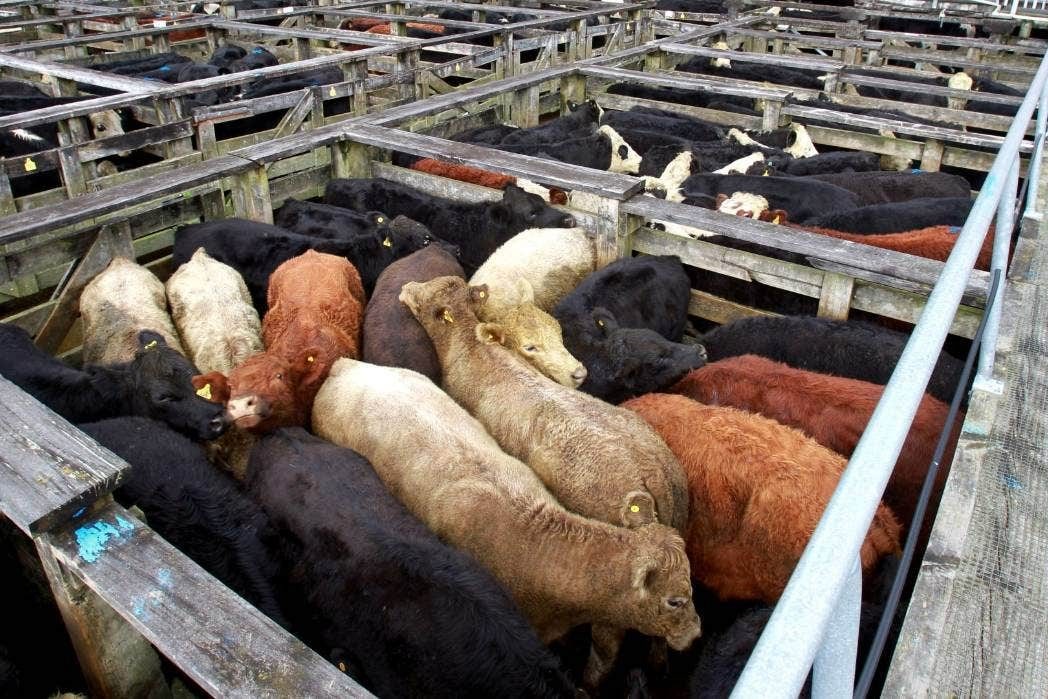Breeding values may seem difficult to use, but they are easy compared to the work that goes into them.
On those cold days in late autumn and early winter when beef farmers are out scouring the countryside for their next money-making sire, take some time to reflect on the massive amount of effort and technology that’s gone into generating the breeding values in all those shiny bull sale catalogues. It involves a lot of people, a lot of money, and a lot of very considered thought.
At the root of it all, in my view, is a breeding objective. A breeding objective is that marriage between knowing where you want to go and how to get there. If a breeding objective isn’t well defined, then it could be a bit shotgun-like and we’d have bulls doing all sorts of things, genetically.
New Zealand is an unusual country in that it exports so much of its primary produce. So the breeding objective for beef needs to consider those who buy our beef internationally, as well as what Kiwis want on their plates, in their ovens or in their burgers.
Setting the breeding objective is quite a lengthy process and it involves many participants from throughout the supply chain. We design our breeding objectives economically, so we want to know the costs, prices, margins and profits that go with every movement or transaction. Farmers, processors, exporters, rural professionals, scientists, economists, industry bodies, and buyers all contribute to painting this picture.
Recently, breeding objectives have felt pressure to change, or maybe adapt is a better word. Climate change, environmental sustainability and to some extent, social licence are all knocking on the breeding objective door saying, “Hey, what about me?” Production and efficiency have tended to dominate breeding objective thinking, but other factors now need to also be considered.
Why? Because the world is changing and buyers of red meat in the sophisticated markets we target expect more than just production and efficiency. So, we think carefully about how to introduce new elements into our breeding objectives, which means we can offer our product at a premium, maximising the return to farmers for all the effort and cost that they incur when meeting consumers’ values.
Looking for improvement
As the farming experts, you’ll be well aware that biology is hard to change. Reliably squeezing out an extra couple of centimetres of eye muscle area or an extra millimetre of intramuscular fat from each crop of calves is not easy and it certainly takes time.
And what about the things we can’t easily measure, such as fewer methane-laden burps or less nitrogen-laced urine? I wish I had a magic wand, but the reality is that we are on a path of continual improvement.
Gathering performance data from breeders’ herds will remain absolutely essential. As the traits of interest become more novel and specific, we’ll need some breeders to record new things in new ways, probably at additional cost. Progressive attitudes from leaders within the beef industry are vital if we are to include new, important traits in our breeding objectives. Fortunately, behind the scenes, this is happening.
No threat
Genomics has been around for almost 15 years now and our red meat industry has adapted reasonably well to what was initially perceived as a threat. We’ll need DNA from New Zealand herds included in analyses domestically and internationally to help us identify genotypes that “bend the curve” more quickly than before. Traits for reduced emissions and smaller environmental footprint will need all the help they can get.
Having defined our breeding objectives, collected a whole stack of performance records and some DNA, and then had a cup-o-tea and a lie down, next we need to implement all this in a form that makes it easy to match bulls with buyers. The long, considered gaze from the weathered eye of a crusty bull buyer will never be lost. Even in peripheral vision, buyers need to like what they see every day in the front paddock.
Once 100 bulls have been scanned and narrowed down to 10, then the catalogue is sought from the back pocket. These catalogues actually contain a wealth of information and this can seem overwhelming, but it doesn’t need to be. Mark each breeding value, arrow up or down, if you like. (Do this in advance or you’ll miss out on the host’s BBQ.) Or look for the selection indexes that gather up a lot of what’s important and provide you with just one number to think about.
“Maternal”, “terminal”, “heifer”, “dairy”, etc; the names of selection indexes are designed to help match what you see in the pen with your needs and your market. Selection indexes are a great way to narrow 10 down to 4. So, we are getting there!
The last bit is hard, or easy, depending on the result. The selection index number is an indication of the profit that an individual bull will contribute to your business. So, the larger the number the more profit in the bull. Therefore you might think that bulls with larger numbers always sell for higher prices. Well, that’s not always the case. Remember the proverb “beauty is in the eye of the beholder”? This is why you need to begin the auction with at least four bulls marked with a star in your catalogue, because others might agree with you. Happy bidding.
- Sharl Liebergreen is a consultant with AbacusBio.





